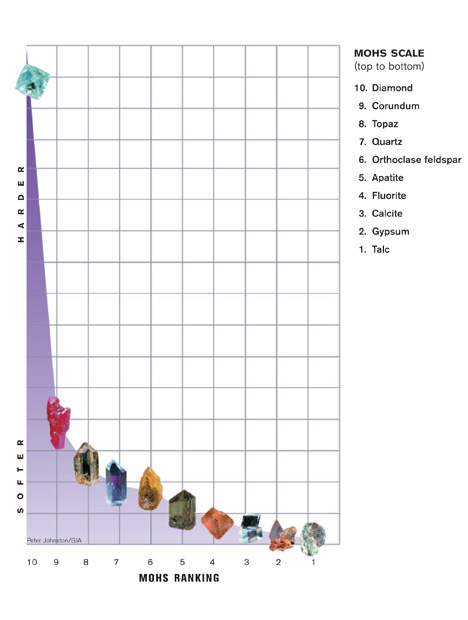Ametrine Care and Cleaning

Gem and mineral hardness is measured on the Mohs scale. The numbers are based on the relative ease or difficulty with which one mineral can be scratched by another. But the Mohs scale is deceptive. The steps between the minerals are not evenly spaced. For example, diamond is only one number away, but it’s many times harder than gems in the corundum family.
Common substances like sand and dust are composed mostly of quartz, the mineral species that includes ametrine. So, while ametrine is a great gemstone for use in jewelry, it should be treated with the proper care to prevent scratching and other damage.
Like amethyst and citrine, ametrine rates a 7 on the Mohs scale and has good toughness, so it is suitable for all jewelry types. This includes rings as long as the wearer understands the limits of its hardness and follows proper precautions to prevent scratching.

Ametrine’s hardness ranks a 7 on the Mohs hardness scale. Illustration by Peter Johnston, © GIA
StabilityAbrupt temperature changes can cause ametrine to fracture. Some ametrine colors can fade with prolonged exposure to intense light. Ametrine can also be damaged by hydrofluoric acid, ammonium fluoride, and alkaline solutions.
Cleaning
Ametrine can be safely cleaned with warm, soapy water. Ultrasonic cleaners are usually safe except in the rare instances where a stone is dyed or treated by fracture filling. Steam cleaning is not recommended, and ametrine should not be exposed to heat.

With proper care, ametrine’s beauty will enhance all types of jewelry and provide years of wearing enjoyment. Photo by Robert Weldon/GIA, courtesy Minerales y Metales del Oriente, Bolivia, SA.



